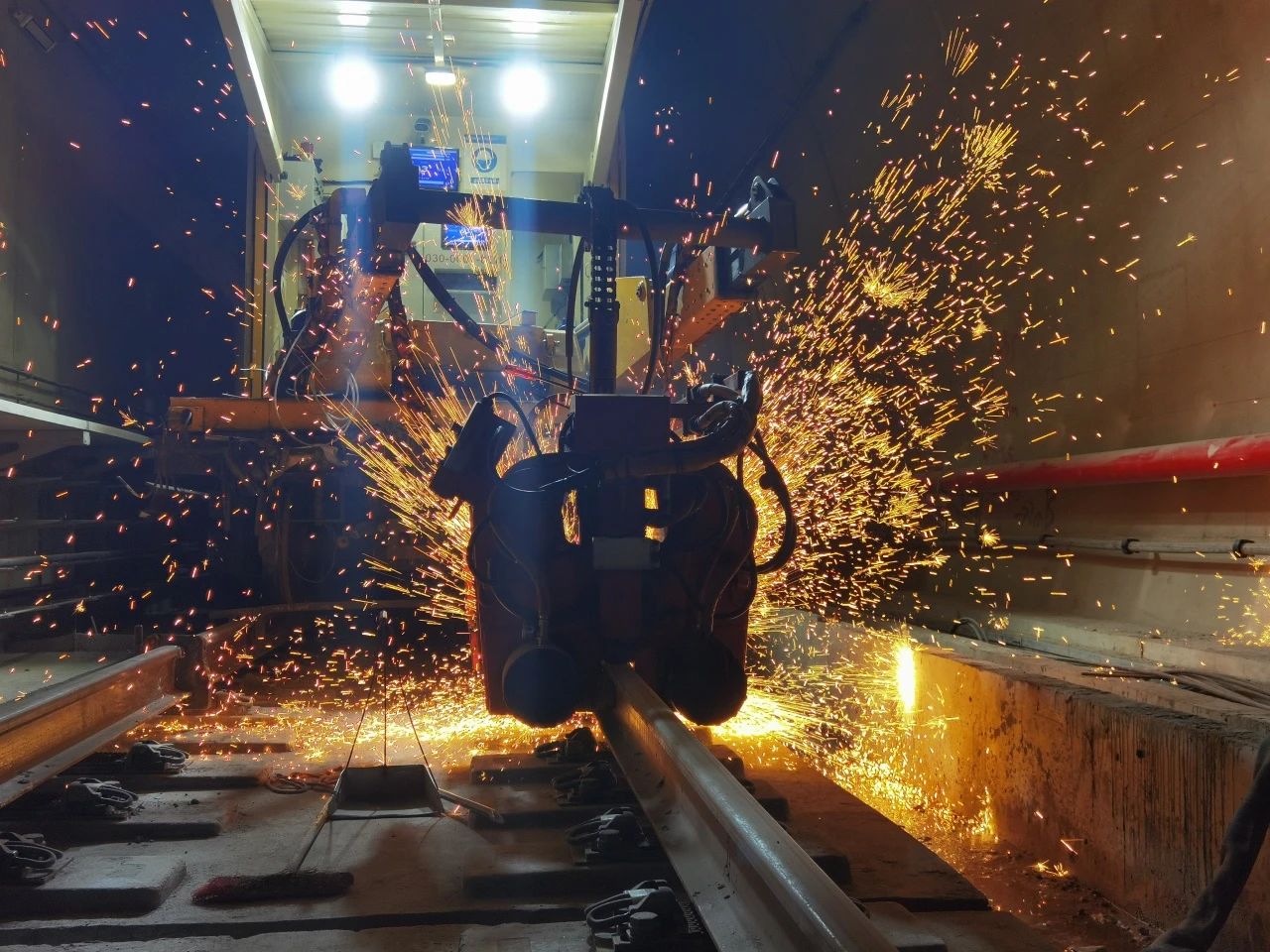more>>Industry Overview
more>>Link us
News

Recently, the rail welding mission of the Bishan-Tongliang Railway (Bichongxian) in Chongqing reached an important milestone: within the 36.25-kilometer section from West Tongliang to Dalu, 2,900 welding joints were completed without any damage, marking significant progress in the rail welding operations. Notably, the successful completion of this task was attributed to the exceptional performance of new welding machines and dual-frequency electric normalizing machines.
Since welding commenced on December 26th, 2023, the Bichongxian project utilized new welding machines for the first time. These machines leverage power electronic converters with three-phase input and single-phase output, reducing the power demand on generator sets. Compared to traditional welding machines, the new models consume less diesel per weld joint, resulting in remarkable energy savings. This change not only lowered construction costs but also minimized energy consumption and environmental pollution, achieving a dual victory in economic and environmental benefits.

The primary load of welding machines is the welding transformer's electricity consumption, and generator sets often encounter severe unbalanced loading issues. The three-phase to single-phase conversion balances the load, stabilizing the voltage supplied by the generator sets and prolonging their lifespan. Additionally, during the rail welding process, voltage fluctuations are smoother, ensuring stable welding quality. This improvement enhances the reliability of welding joints and significantly reduces the fault rate during construction, laying a solid foundation for the safe construction of the Bichongxian line.

On the construction site, alongside the new welding machines, dual-frequency electric normalizing machines also played a pivotal role. These machines employ automatic temperature control, dual-frequency technology, real-time display of normalizing temperature curves, and data saving, among other proprietary technologies. Compared to traditional oxygen-acetylene normalizing, they offer reliability, high precision, stability, and durability. By automating the normalizing process, these machines reduce labor intensity, save labor costs, significantly boost production efficiency and weld quality, and decrease environmental pollution.
The dual-frequency technology ensures the heating temperature of the rail's base. The low-frequency range focuses on heating the rail's top and interior, while the high-frequency range emphasizes elevating the temperature of the rail's base, enhancing its heating quality and reducing noise in ultrasonic flaw detection. The entire process is controlled by automatic temperature control with variable frequency, eliminating the influence of operator error on quality.
The successful completion of the rail welding mission for the Bichongxian line not only demonstrates the outstanding performance of new welding machines and dual-frequency electric normalizing machines but also adds a significant chapter to Chongqing's urban rail transit construction. In the future, with the introduction of more novel technologies and equipment, urban rail transit construction is expected to embrace broader development opportunities and a brighter future.

Source: Equipment Management Company